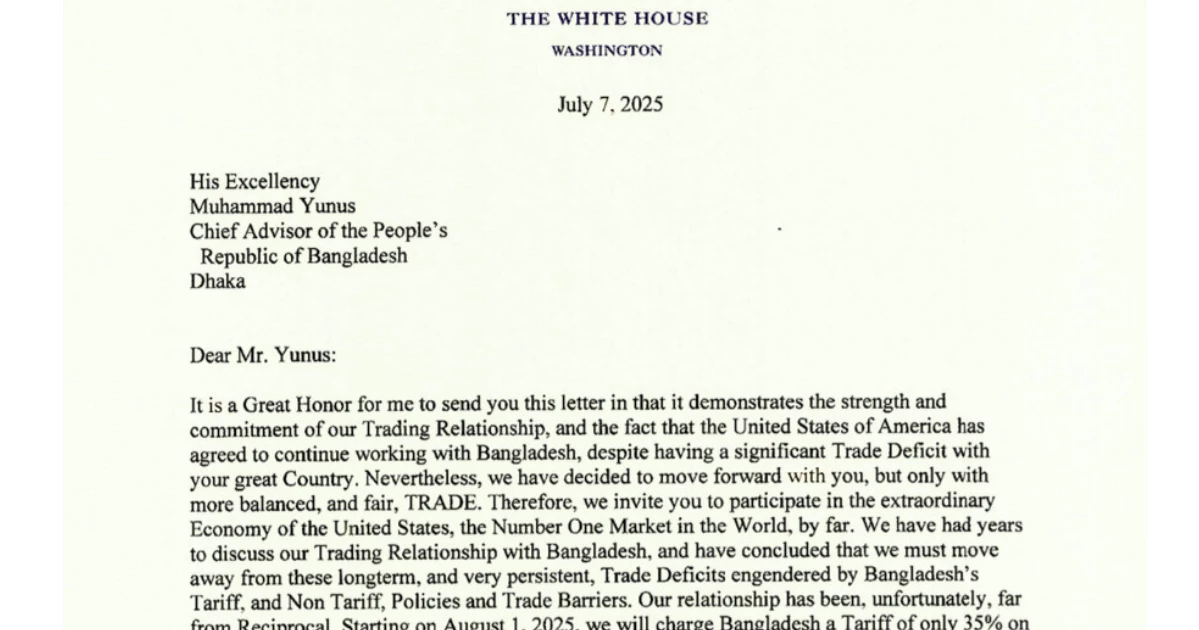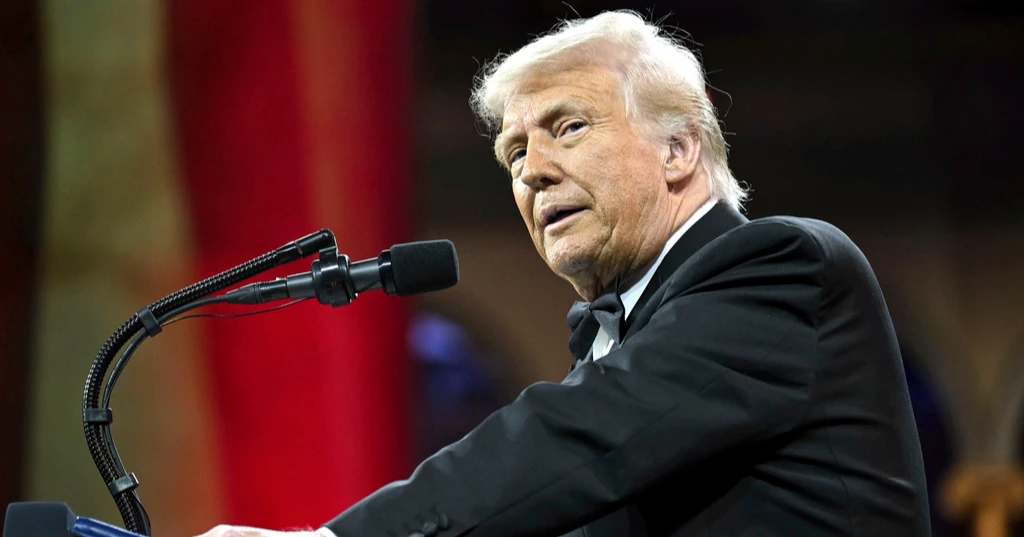US President Donald Trump has delayed imposing higher tariffs on US imports, while sending letters to 14 countries detailing the levies they face. The latest development comes as a 90-day pause the White House placed on some of its most aggressive import taxes was set to expire this week, reports agencies.
The US president slapped a 35% tariff on Bangladeshi goods, 2% lower than his initial rate announced three months ago, but significantly higher than close rival Vietnam (in the field of RMG), which recently secured a trade deal with the US under which its goods will be charged a tariff of 20%.
On Monday, Trump shared letters addressing leaders of 14 countries on social media, informing them of his latest tariff plans, while adding that the rates could be modified “upward or downward, depending on our relationship with your country”.
He made the much-anticipated announcement on his Truth Social account, by publishing his letter dated July 7 to Chief Adviser Muhammad Yunus at 2:36am (GMT +6) on Tuesday.

He posted identical letters to other world leaders revealing the tariff rates for their respective countries, which said the new rates would be effective from August 1.
The president also renewed his threat of a 25% tax on products entering the country from Japan and South Korea. Higher tariffs had been set to come into effect on July 9, having previously been suspended with White House officials saying they would look to strike trade deals.
When asked by a reporter whether the new August date was a hard deadline, Trump said, “I would say firm, but not 100% firm. If they call up and they say we’d like to do something a different way, we’re going to be open to that.”
The letters warned Trump’s counterparts to not retaliate by increasing their own import taxes, or else the Trump administration would further increase tariffs.
“If for any reason you decide to raise your Tariffs, then, whatever the number you choose to raise them by, will be added onto the 35% that we charge,” Trump wrote in the letter to Yunus.
Most of the tariff rates outlined by Trump were similar to those outlined in April, when he made his “Liberation Day” announcement, threatening a wave of new taxes on goods from various countries.
The president argues that introducing tariffs will protect American businesses from foreign competition and also boost domestic manufacturing and jobs but economists say the measures will raise prices in the US and reduce trade. The three main share indexes in the US slipped on Monday, with Toyota’s US-listed shares down 4%.
Japan sent more than $148bn in goods to the US last year, making it America’s fifth biggest supplier of imports, after the European Union (EU), Mexico, China and Canada, according to US trade data. South Korea was also in the top 10.

As well as South Korea and Japan, Trump on Monday set out plans for a 40% tariff on goods from Myanmar and Laos, a 36% tariff on goods from Thailand and Cambodia, a 35% tariff on goods from Serbia (same as Bangladesh), a 32% tariff on Indonesia, a 30% tariff on goods from South Africa and a 25% tariff on goods from Malaysia and Tunisia.
The deal with Vietnam is seen as significant for Bangladesh, as it is a direct competitor in the lucrative RMG market. Trump said on Wednesday that the US will charge 20% tariffs on imports from Vietnam under the new deal. That is significantly lower than the 46% announced earlier, which was set to go into effect from July 9, at the end of a 90-day pause that Trump had announced to his original announcement of ‘reciprocal tariffs’ on almost every country around the world that the US trades with.
In order to secure that large reduction from 46% to 20% though, Trump said Vietnam agreed to charge no tariffs at all, on US products. In the 2023-24 fiscal, Bangladesh’s tariffs on imports from the US earned the government revenues of almost Tk 1500 crore, according to official figures.
When the president first announced a raft of steep tariffs in April, turmoil broke out on financial markets, leading to the president suspending some of the highest duties to allow for talks, while keeping in place a 10% levy. Trump had initially described his April tariffs as “reciprocal”, claiming they were required to fight back against other countries’ trade rules he saw as unfair to US exports.
He has separately announced tariffs for key sectors, such as steel and cars, citing national security concerns, and threatened raise levies on other items, such as pharmaceuticals and lumber. The multi-layered policies have complicated trade talks, with car tariffs a key sticking point in negotiations with Japan and South Korea.
So far, the US has struck agreements with the UK and Vietnam, as well as a partial deal with China. In all three of those cases, the agreements have raised tariffs compared with levels before Trump returned to the White House, while key issues remain unresolved.
The US has said a deal with India is close, reports BBC.
The EU is also engaged in talks, with reports suggesting officials in the bloc were not expecting to receive a tariff letter. A spokesperson for the EU also said the European Commission’s president Ursula von der Leyen had a “good exchange” with Trump.
Just a few weeks ago, the US president had threatened the EU with a 50% tax unless it reached an agreement. Last week, Trump said Japan could face a “30% or 35%” tariff if the country failed to reach a deal with the US by Wednesday.


